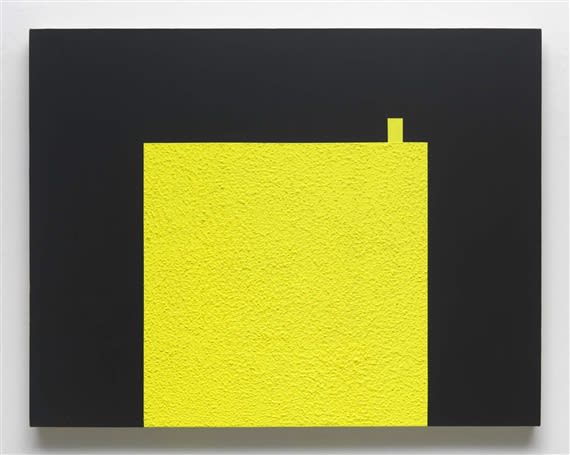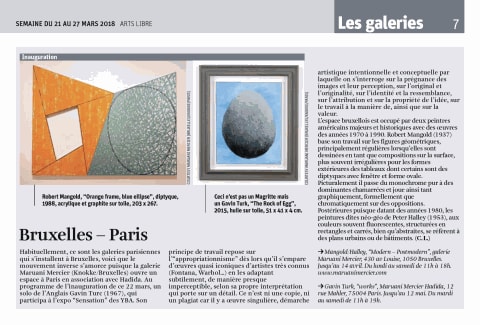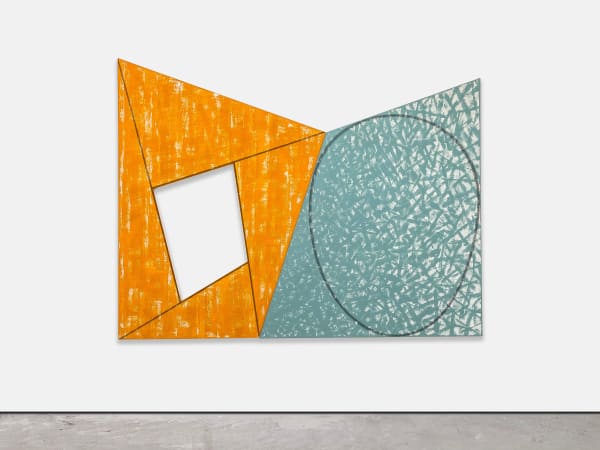Modern I Postmodern: Peter Halley - Robert Mangold
Born in 1937 in North Tonawanda, New York, he lives and works in New York City.
-

Robert Mangold & Peter Halley: Modern / Postmodern
MutualArt 7.4.2018Robert Mangold and Peter Halley have developed an artistic vocabulary derived from the idea of geometry and asymmetry in shape and form. They explore both...Read more -

Bruxelles- Paris
La Libre 23.3.2018Claude Lorent pour La Libre Habituellement, ce sont les galeries parisiennes qui s’installent à Bruxelles, voici que le mouvement inverse s’amorce puisque la galerie Maruani...Read more





